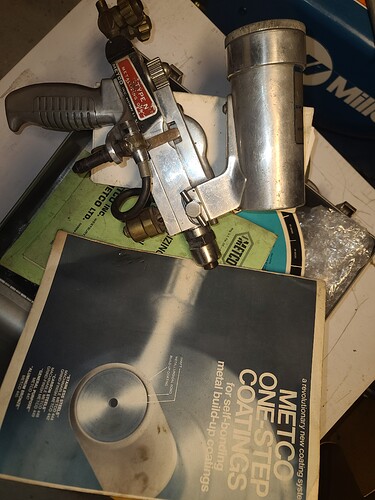Nah, they don’t because the layer thiccness required would make the shielding too heavy. Too thin and it’ll just burn off. That’s why ceramics ![]()
Are you an engineer or a pump specialist? Because if so, how does it feel to have all your funny claims debunked with simple physics F A C T S by some random n00b?
fact check me senpai
Now that you mentioned it i want a golden space shuttle!
- It’s not tiny. And 2. Yes it makes such a huge difference even with a small application. This is why it occurs.
Ok,
I’ll bite, what is the purpose of the coil inside the head?
So this is actually a design I had drawn up(original was way more complex and I was working on alot of projects so it got sidelined) and sent to rocco about 3-4 years ago. The reason for the useage with the components fitted inside is to allow the first coil to absorb as much heat as possible and remove kw energy from the vapor prior to entering the condenser arm. This solely allows the vacuum jacketed head to opperate like it’s supposed to. The coil in the head doesn’t disturb molecular in flow dynamics as it’s duty is to absorb heat before the heat affects the sides of the walls of the fraction collector as well as allows those ambient vacuum void temps to be more stable. See when you get blow by in a head it means it’s just working overtime bc the arm sends back fluids to the heater chiller and it can’t maintain the kw heat removal. So if you can maintain exact temps you can bounce unwanted fractions right out of the condenser arm without over shooting flow rates. This maintains a drier vacuum in the condenser arm. I supposed in a side by side if you dipped temps hard on a halo vs the spd8 they would be very similar. The halo controls the wall temps and that’s actually very usefull since you don’t need to waste energy maintaining the entire head temp with fluids you only target the location desired Wich where the halo sits. The targeted kw removal or maintenancing of the halo temp zone is extreme accurate and effective. The coil on the spd8 actually has a different type of fraction collector design so if you dip the coil temp down it will act as a violent collection of molecules dragged to the coil like a magnet. That coil would inherently distribute those lower temps right on the surface of the fraction collector and dish and that would display a whole new set of efficiency within the head.
This head is similar to a spd7 but it’s design was for traditional upright useage and it has a baffle non vig entry to the flask where the vapors begin to process in the upper area of the inside of the flask similar to hb.
I guess it serves multiple purposes. The head also has different functional geometry
Are you seriously the only person in the industry that knows this? I’m really trying to give you the benefit of the doubt, but my measly googling skills are not sufficient to find anything on thermionic electron emission in the context of distillation, let alone insulation in general.
No I’m not. I learned it from far smarter people than me.
Do you actually think I wasted time on patents and discovery of novel technologies as a example double vacuum jacketed boddies to increase head performance? Jesus. What a waste of time.
Still got these up for grabs if anyone needs a giant pump. Barely any hours. $8500 should probably do the trick ![]()
I do indeed.
@soxlet I need some advise
So the heating elements in solution I was considering coating them with ptfe but the temp is really close to it s maximum operation temp so it s not a real good option
Question what other option is there
A 316 stainless heating elements ?
B a better heat ristant coating than ptfe ?
C plating with gold or platinum but is that heat resistent ?
@Roguelab I know I’m not aoxhlet but my suggestion would be for you to have the elements thermally spray coated with alumina powder.
Totally chemically inert, extremely durable even under extremely high temperatures (used for ceramic coating pistons and exhaust manifolds.), and dirt cheap if you’ve got the equipment to get it done yourself.
Is that fda approved ?
Probably not but seeing as how that wouldn’t concern me, I don’t actually have that information.
I don’t know why it wouldn’t be, the alumina essentially gets ejected as molten particles and ends up splattering onto the substrate. It makes a surface finish thats extremely slick like porcelain and the the surface is really wear resistant.
I would think that the surface finish would be considered “hygenic” like the FDA likes stainless to be. But again idk.
Edit: looks like there’s lots of instances of thermally sprayed metal oxides being used for coating components that will normally be in contact with foods.
go with ss if you can, other option would be a tube you could run heat transfer fluid through?
@Roguelab Are stainless RBF a thing? instead of glass its stainless. I was thinking itd be cool to have a jacketed RBF so that the heat from the mantle warms the liquid in the jacket and gives uniform heating throughout the entire jacketed portion of the rbf. Theres probably a few reasons why its not a thing just curious.
Man if it s up to me sure but the truth is
I think yust reactor style is easier
The main one being that you’re heating liquids usually that (when stirred) wouldn’t see any benefit from an interlayer between them and the actual heat source. It would just complicate things.
Kinda heart broken this was overlooked.
